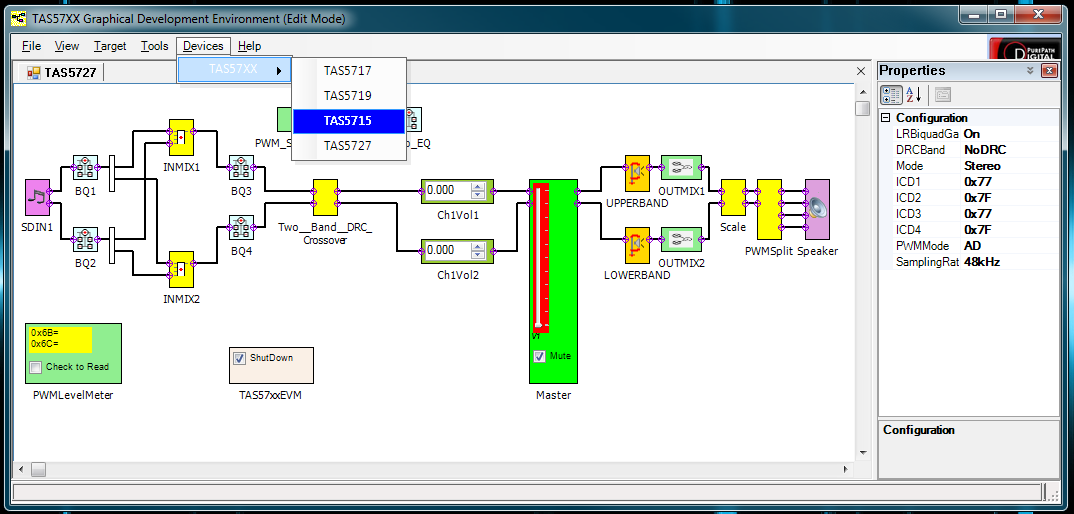Team,
I'm working with a customer who is evaluating our TAS5715 using the EVM. They are having issues manipulating the processing blocks in the UI, details below:
Setup-
- TI GDE running on Win7 Pro platform
- Have ran I2C memory tool as described in section 3 of SLOU304
- With target menu item selected, "Connect" yields the following in the output window
- Target connected
- Setting EVM state... Done
- After UI active, EVM configured for analog inputs via RCA inputs
After configuration, no sound is produced, but when un-mute is selectetd on the master volume control on the GDE, the unit produces sound. However, any attempt to manipulate any of the processing block is unsuccessful.
Comments from the customer below:
- trying to run the master gain up generates very high levels about 20% of the way up from the bottom, and then it shuts down. Pushing the fader up further it starts producing sound again until it's about 70% of the way up, gets to a very high level, and shut down again.
- There are two controls immediately prior to the master volume labeled Ch1Vol1 and Ch1Vol2. It's not clear what purpose they serve, but making even tiny changes to these value results in a dramatic increase in output level, which can only be resolved by muting and unmuting the master volume control. The values seem to be any signed float value, but it does not seem to have any major effect, other than what I observed above.
- I have configured the system to use only one path through the initial Biquads, and am not using any of the crossover facilities. When I click on the first (input) biquad, I set it as a variable-Q high-pass with Fc=180Hz and Q=2.0, then click the apply control. I can see the response I am looking for being drawn, but it has no apparent effect on the response of the system, I have gone so fa as to set the Fc=8000Hz, which should have a dramatic audible effect, but applying the filter seems to have no effect audibly
- Similarly, trying any of the other biquads does not seem to have an audible effect
Any comments on the above observations would be appreciated.
-Sean


